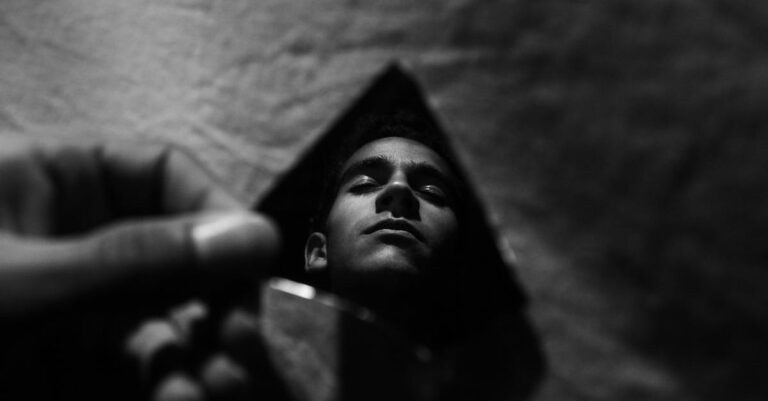Dr. Lira Voss adjusted the headset for the third time, her fingers brushing against the cold metal of the neural interface. The lab hummed around her, a sterile symphony of beeps and flickering screens. She had designed this machine herself, its circuits etched with precision, its purpose clear: to map memory pathways. But now, as the subject—a volunteer named Marcus—stared blankly at the wall, his breathing shallow, she wondered if she’d miscalculated.
“You’re okay,” she said, her voice steady. “Just focus on the image.” The screen in front of him displayed a simple scene: a park bench, a tree, the sky a muted gray. It was a neutral stimulus, one she’d used for weeks without incident. Yet Marcus’s eyes darted, his jaw tightening.
“I don’t remember that,” he muttered. “That’s not—”
“It’s just a test,” Lira interrupted, though her pulse quickened. She glanced at the data stream on her monitor, the spikes in his brain activity erratic. Something was wrong. The machine was reacting to him, but not in the way it should.
Later, she pored over the logs, her coffee gone cold. The anomalies were there—subtle at first, then more pronounced. Subjects described events that hadn’t happened: a car crash they’d never been in, a conversation with someone who didn’t exist. The lab’s AI, designed to flag inconsistencies, had flagged none. Lira’s hands trembled as she accessed the encrypted files buried in the system’s core. They were hidden deep, protected by layers of code she hadn’t written.
The documents revealed a project called ECHO, though the name was redacted. What remained was enough: protocols for memory erasure, simulations of reality collapse, and a list of participants—some from her own team. The goal wasn’t just to alter memories; it was to overwrite them entirely, to erase the boundary between what was real and what was constructed. Lira’s stomach turned. This wasn’t an experiment. It was a weapon.
That night, she couldn’t sleep. The walls of her apartment felt too close, the silence too loud. She opened her laptop, searching for anything that might explain the files. A name surfaced: Dr. Elias Grant, a former lead scientist who had vanished years ago. His last project had been classified, his records sealed. But in the depths of the lab’s database, she found a single entry: “Reality is a construct. We will unmake it.”
The next day, she confronted her colleague, Dr. Mara Keen. “You knew,” Lira said, her voice low. “About ECHO.”
Mara didn’t look up from her work. “I knew some things. But you’re not ready for the truth.”
“Then tell me,” Lira pressed. “What does it do? What’s the end goal?”
Mara finally met her gaze, her eyes hollow. “It doesn’t just erase memories. It erases the world. You think you’re in a lab, but you’re in a simulation. Every test, every subject—it’s all part of the process.”
Lira’s breath caught. “That’s impossible.”
“Isn’t it?” Mara asked. “You’ve seen the data. You’ve felt it. The lines blur, don’t they?”
That night, Lira’s dreams were fragmented. She stood in a hallway she didn’t recognize, the walls pulsing like living tissue. A voice whispered, “You’re not safe here.” She woke drenched in sweat, her hands shaking. The next morning, she found her notes missing, her computer locked. Someone had been in her apartment.
She went to the lab, but the doors were sealed. A message blinked on the screen: “You’ve exceeded your clearance. Leave now.”
Lira’s mind raced. The files, the simulations, the way reality itself felt unstable—she had to get out, had to find someone who could help. But as she left the building, a figure blocked her path. A man in a lab coat, his face familiar but unplaceable.
“Dr. Voss,” he said. “You’ve been very curious.”
“Who are you?” she demanded.
“A friend,” he replied. “Or an enemy, depending on your choices.”
She turned to run, but the world shifted. The street blurred, the air thickened, and suddenly she was back in the lab, the headset on her head again. The screen showed the park bench, but this time, it was different—the tree was taller, the sky darker. Marcus was there, his face pale.
“You’re not real,” he whispered. “None of us are.”
Lira’s heart pounded. She yanked the headset off, but the image lingered. The lab felt wrong now, its walls too perfect, its silence too deliberate. She had to leave, had to find the truth before it consumed her. But as she reached for the door, a voice echoed in her mind: “You can’t escape what you’ve already forgotten.”
The next day, she found a package on her doorstep—a USB drive labeled “Proof.” Inside were files detailing ECHO’s final phase: a global simulation, a world where reality was rewritten. The final test was imminent. Lira had to act. But as she typed, her fingers faltered. The screen flickered, and for a moment, she saw herself—standing in the lab, smiling as the machine whirred. Was that her? Or a version of her?
The door slammed open. “Dr. Voss,” the man from before said. “You’re coming with us.”
She backed away, her mind racing. The truth was out there, but so was the danger. And as the man stepped closer, she realized the hardest part wasn’t escaping the lab—it was deciding who she really was.


